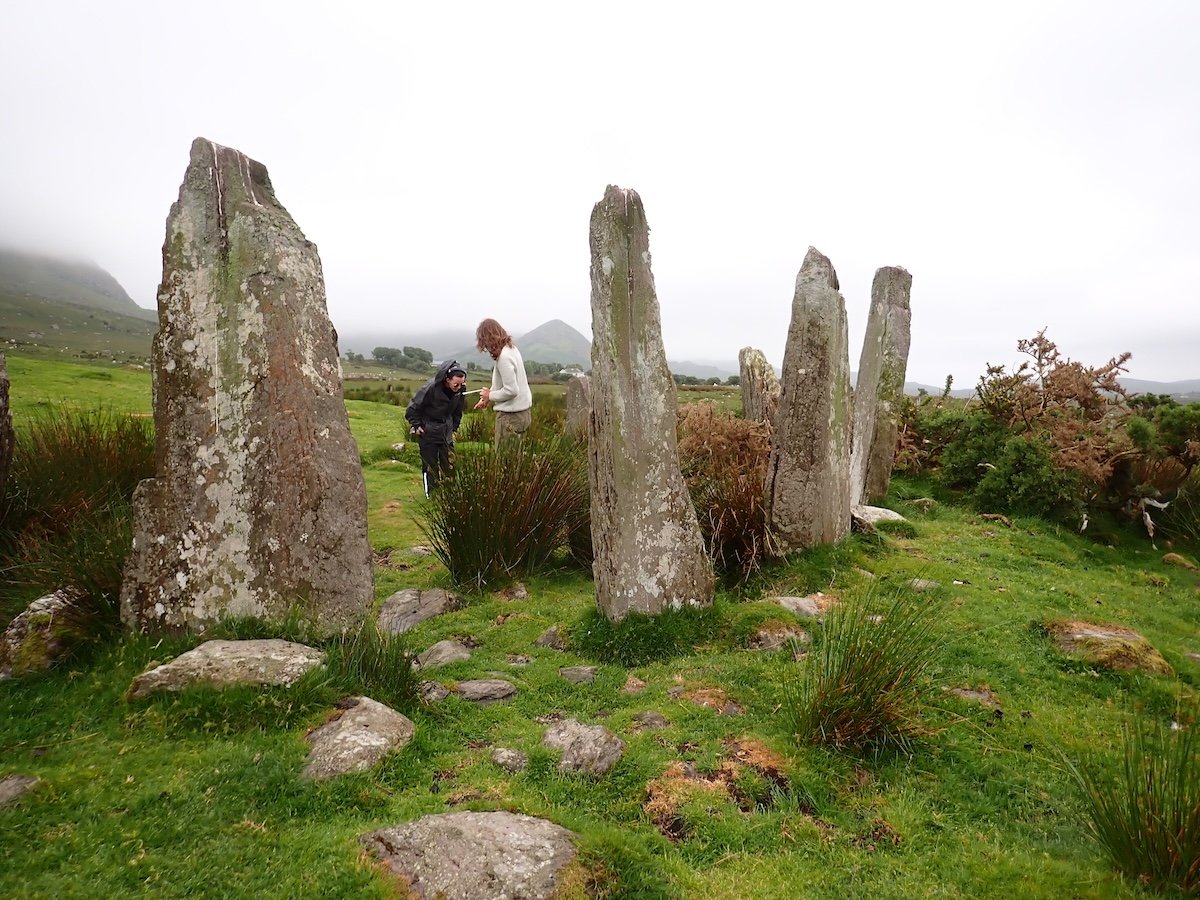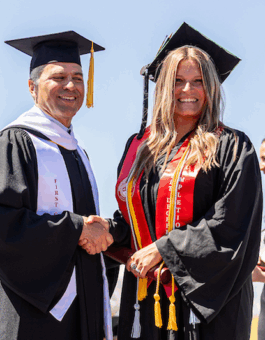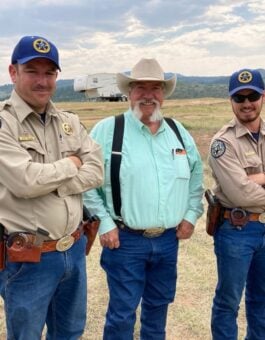On the southwestern edge of Ireland, where giant waves smash against the 300-foot cliffs rising to meet the mighty North Atlantic, a stone likeness of the goddess Cailleach Bhéarra stares out toward the sea. According to legend, this sovereignty goddess, embodiment of the land, and harbinger of winter, transformed herself into stone there so she could always remain with her people.
To modern ears, it sounds far-fetched. But even now, pilgrims leave tributes to her, like flowers, special stones, shells, or feathers. On stormy days, a vicious wind blows the gifts away. And, on the days that follow, still more pilgrims return them to their place. Last May, six Western Colorado University students stood beside the strewn offerings, thinking about why, in this era of science and technology, people would visit and pay tribute to a weatherworn rock.
They knew the answer. They’d seen it in the faces of the people they met and the places they’d visited in their two weeks in Ireland. They knew the people cared because earth-based myths, such as those of the Cailleach, continue to shape modern culture, defining the Irish people’s relationship to the land and each other. They had learned that modern Ireland, like all places, is inseparable from the stories of its past.
The relationship between a place, its people, and the stories they co-create forms the foundation of Professor Molly Murfee’s international course titled Myth, History, and Culture, developed in partnership with Western’s Center for Learning and Innovation and the Honors Program.
Murfee, who is also an environmental author, is preparing for another trip to Ireland this spring, exploring the concept of place as text. “It is a mythologized landscape. When you look out on it, nearly every peak has a story or a myth or a folk tale behind it,” Murfee said. “And so in walking through the landscape, you are literally walking through story.”
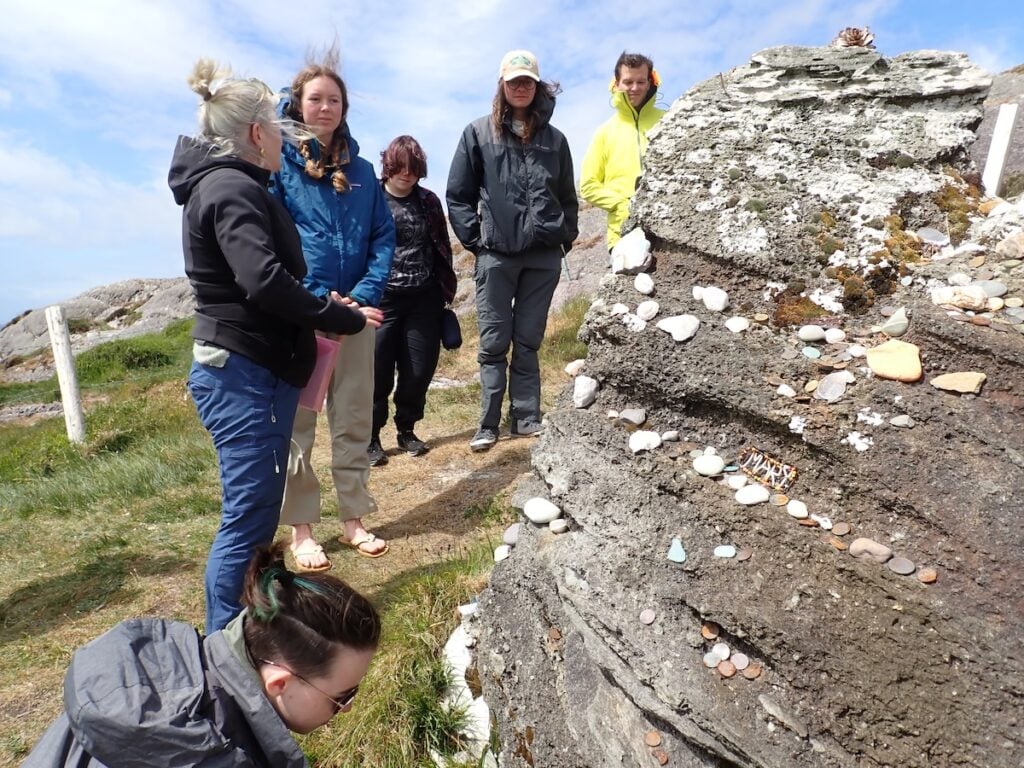
A Storied Landscape
Now in its third iteration, Murfee’s course ranges from the age of Stonehenge, around 3,000 B.C.E., to modern times, delving into the pre-Christian mythologies that emerged from the Irish landscape long before leprechauns became the commercialized icons of today. Instead of traveling the well-worn paths, participants take the byways through small villages and farm fields, where they live among the myths.
Over the course of two weeks, they joined local guides for tours of ancient archaeological sites, some well-developed and others nondescript piles of stones among the sheep in a farmer’s field. All of the sites relate to an ancestral connection to the earth. Students listened as storytellers recounted the taboos, or geis, that once (and sometimes still) governed how people behaved. On Cape Clear, a Gaelic-speaking island off the southern coast, they attended a festival featuring Gaelic films with English subtitles, many centered around Irish folklore and myth.
“When the Irish people move through the landscape, they’re moving through a storied landscape where the erratic boulder in the field was moved there by the fairies. An atmospheric lake has a demigod living under it, who appears every seven years,” Murfee said. “They’re interacting with the stories that rise from the land constantly.”
Students prepare for months before departing, reading Irish novels, watching Irish movies, learning about the region’s natural history, and creating personal plans for unplugging from their phones. Once in-country, the students write and draw in field journals and learn their lessons in conversation with each other and local people, as every participant is required to interview someone from Ireland along the way. They cook meals together in hostels, debrief over dinner at the pub, and reflect on what the land is teaching them.
“The idea is to engage every part of your brain,” Murfee said. “To be in the world, not behind a screen.”
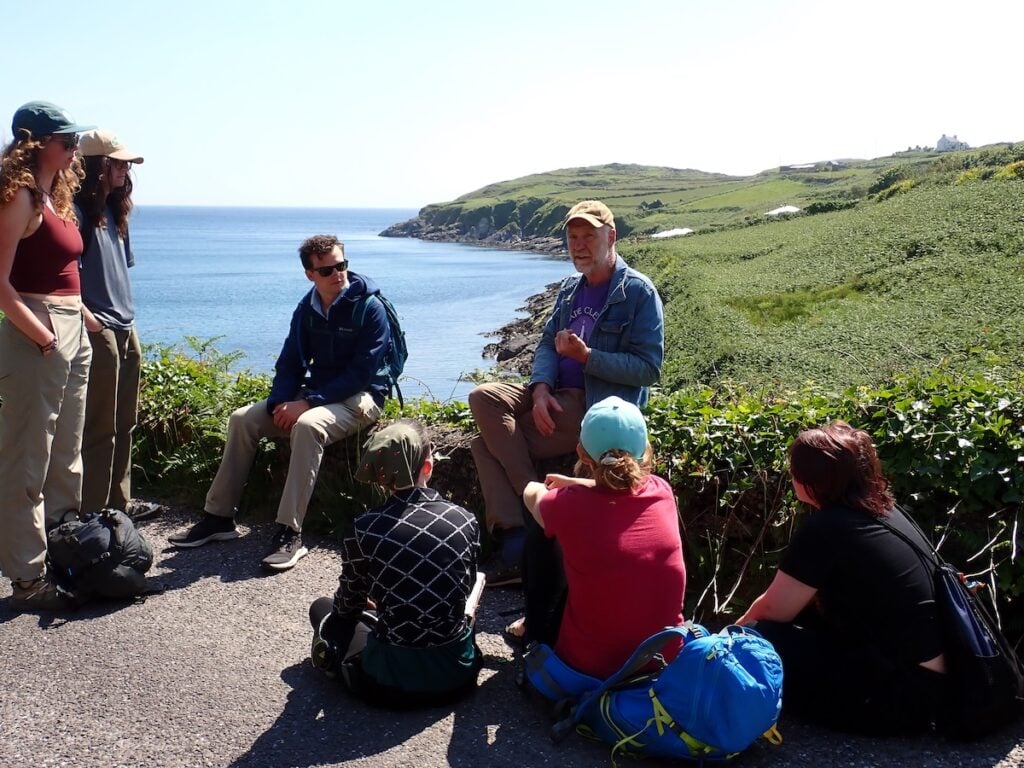
Reflection and Return
For students of European descent, the trip is also a deeper reckoning with ancestry and origin. Murfee, who traces her own roots to Ireland, encourages students to explore not just the places they are visiting but also their own ancestral roots and stories.
“In the U.S., we often don’t think of ourselves as having Indigenous stories instructing us how to be in relationship with the land,” she said. “The pre-Christian Celtic nations ranged throughout Europe. So, for some of us, these are our stories.”
Through the trip, students also studied colonial parallels between Ireland and the Americas, from outlawed languages to displaced peoples, and saw how reviving the Irish language has become a cultural movement, embraced by marginalized communities as a form of resistance.
“It’s a phenomenal experience for them to study abroad,” Murfee said. “And regardless of what the course content is, just traveling in another nation and realizing both the commonality of humanity across the globe, as well as that there are differences in the way that people eat and act and express themselves, is an experience everyone should have.”
Murfee’s next trip to Ireland is scheduled for May 11–27, 2026. Students from all majors are welcome to apply, and no prior writing experience is required. Past participants have included students in environmental studies and sciences, anthropology, creative writing, art, and more.
“This course is for anyone curious about how our own ancient, ancestral past might offer a more encouraging ethos towards our relationship to the land today,” Murfee said. “It’s about learning how to pay attention to the landscape, to hear the stories rising from it, and to find your own responsibility within it all.”
Applications are due November 18, and a deposit to secure a spot is due December 3. To receive the application, contact Ireland Abroad faculty member Molly Murfee at mmurfee@western.edu.
Find more information about credits and coursework on our Short-Term Domestic & International Trips page.
